Category: DISC Webinars
Stress Management Using DISC
How can you use DISC to manage your stress, and also help your employee’s manage stress? Managers can use DISC as a tool to identify when employees are feeling stressed; although, keep in mind, not all people exhibit stress the same way. In addition, there are also different stressors for different DISC Styles. What may be a stressor for one person may actually be a motivator and energizing for another.
How can we be more self-aware to better manage stress
Managers who are able to recognize when employees are showing signs of stress can also take the extra step to understand when to step in and how to help alleviate stress in their employees. This will help employees become more productive team members.
 Small amounts of stress can be good for us and help motivate us to achieve our goals. Yet, too much stress can impact our health, job performance, and overall happiness. We live in a fast-paced society, with many people interactions and lots of demands. While we may not feel stressed all the time, every one of us find ourselves in situations that cause us to feel stressed. When we are pressured or stressed we simply don’t have the same energy and focus to modify our styles; therefore, we become more of who we are naturally. Regardless of our style, we all feel stress at one point or another. But what causes our stress? How do we show and respond to stress? For each of us that will be different.
Small amounts of stress can be good for us and help motivate us to achieve our goals. Yet, too much stress can impact our health, job performance, and overall happiness. We live in a fast-paced society, with many people interactions and lots of demands. While we may not feel stressed all the time, every one of us find ourselves in situations that cause us to feel stressed. When we are pressured or stressed we simply don’t have the same energy and focus to modify our styles; therefore, we become more of who we are naturally. Regardless of our style, we all feel stress at one point or another. But what causes our stress? How do we show and respond to stress? For each of us that will be different.
Our hard-wired natural style determines the causes and signs of stress we experience. Everyone responds differently to situations; some situations may cause us to feel uncomfortable, pressured, and ultimately stressed. However, if we have more self-awareness of our DISC style and our stress triggers and reactions, then we are more likely able to manage ourselves when we are in stressful situations.
D-Styles and Stress Management

The cause of stress for D-styles may be situations where they do not have independence or control; for example, if their ability to make independent decisions is taken away or if they feel micromanaged. Feeling stressed begins to amplify their strengths; essentially they become more of who they are naturally. Typically a strength of the D-style is to be assertive and direct. However, when stressed they are likely to become aggressive, impatient, tunnel-visioned on a task, or insensitive.
We need to look at the causes of stress in order to help alleviate it. We know that D-styles want independence and a feeling of control; so giving them choices gives them a sense of control. If they feel like they are in charge and able to act independently, then they will feel more comfortable. Obviously, we can’t always control the situation; but oftentimes we can make small adjustments to consciously improve it.
I-Styles and Stress Management

If I-styles feel they are losing influence or sidelined, they will feel stressed. I-styles seek flexibility and variety; therefore if they feel restricted or overly-structured, it will cause them stress. When they feel pressure, they are likely to overuse the strengths of their natural style. For example, they will become overly focused on relationships or become too interested in the opinions of others. They may become disorganized or try too hard to be liked–to the point they come across as insincere.
I-styles thrive on interactions and being able to influence people. They will feel more comfortable if they are given the opportunity to interact and meet people. In addition, I-styles respond positively if they are given independence and flexibility.
S-Styles and Stress Management
 S-styles are emotional and people-focused; but they do not tend to display their emotions outwardly. When they encounter unexpected changes and unstructured situations, they may feel stressed. Although, it may not be readily apparent, unless you look for the signs. When S-styles feel pressure they can become overly cautious and try to keep the status quo. They may also become withdrawn and hidden. They may resist everything and be stubborn.
S-styles are emotional and people-focused; but they do not tend to display their emotions outwardly. When they encounter unexpected changes and unstructured situations, they may feel stressed. Although, it may not be readily apparent, unless you look for the signs. When S-styles feel pressure they can become overly cautious and try to keep the status quo. They may also become withdrawn and hidden. They may resist everything and be stubborn.
The best approach to helping S-styles alleviate stress is to pay close attention; often the signs of stress are not obvious. They seek sincerity in your guidance. They feel more comfortable in one-on-one relationships so it is best to build rapport. It’s best to provide as much information as possible so they feel the environment is more secure and stable.
C-Styles and Stress Management
 The cause of stress for C-Styles can occur when they don’t feel they have enough information or they are unclear about their roles. They prefer to avoid conflicts, chaos, and uncertainty. Signs of stress in a C-style include questioning everything, fearing the worse or becoming withdrawn and distant. They will refute anything that is not logical and refuse to move in any direction unless they feel everything is perfect.
The cause of stress for C-Styles can occur when they don’t feel they have enough information or they are unclear about their roles. They prefer to avoid conflicts, chaos, and uncertainty. Signs of stress in a C-style include questioning everything, fearing the worse or becoming withdrawn and distant. They will refute anything that is not logical and refuse to move in any direction unless they feel everything is perfect.
The best way to alleviate stress in the C-style is to provide as much information as possible and clear instructions.
Using the Extended DISC Assessment in Stress Management
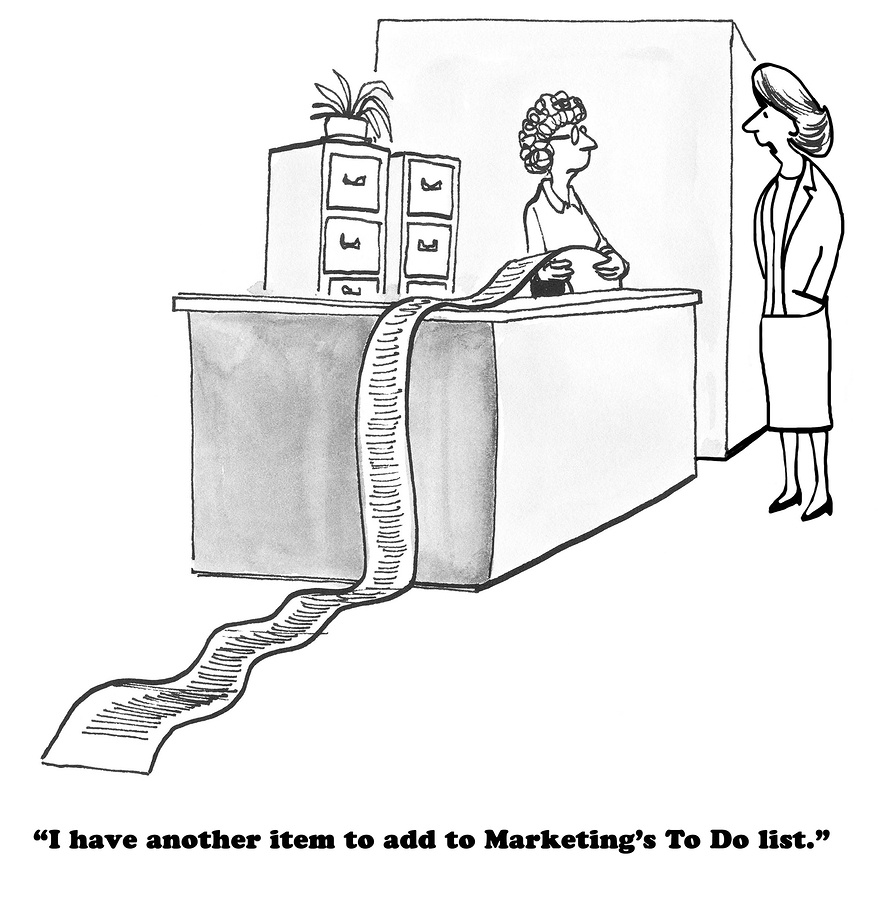 Remember, not everyone deals with stress the same way. D-Styles and I-Styles may be overt and vocal when they are stressed. However, S-Styles and C-Styles are likely to shut down or become invisible; making it difficult to recognize when they are feeling stressed. The DISC tool provides a road map to understand how we naturally prefer to do things, including how we react and how we best manage stress.
Remember, not everyone deals with stress the same way. D-Styles and I-Styles may be overt and vocal when they are stressed. However, S-Styles and C-Styles are likely to shut down or become invisible; making it difficult to recognize when they are feeling stressed. The DISC tool provides a road map to understand how we naturally prefer to do things, including how we react and how we best manage stress.
4 Steps to Using Extended DISC Effectively
The goal of using the Extended DISC’s 4 Step Process is effective behavioral modification.
Your success in life – both professional and personal – is determined in a very large part by how well you interact with other people. Your ability to effectively relate, communicate, influence and motivate others is a crucial skill in creating successful relationships with customers, prospects, colleagues, subordinates, managers, friends and family members.
Why do we need 4 steps to achieve behavior modification?
You have probably noticed it is very easy to get along with certain people. You almost instantly and effortlessly understand the other person. The communication just flows. It is a lot more than just mutual understanding of what is being said. It is as if the person sees you and the rest of the world in very similar terms. When it happens, everything is easier. Think about the last time it happened. Wasn’t it effortless and uncomplicated?
Unfortunately, with most people, communication takes more effort. It does not flow as easily. You cannot quite understand where the other person is coming from, what they really want, and what their intentions are. You may also have an uncomfortable feeling the other person is experiencing the same. You know the outcomes of the interaction are not quite what you want. You may lose a sale, frustrate a customer, de-motivate an employee, or anger a friend. You are likely to feel disappointed, frustrated and even tired. It takes energy, effort and concentration. And yet, the results are still not what you hoped they would be.
 In these situations you probably feel there is something you could do, but are not quite sure what that is. You know your end goal – your destination – but are not sure how to get there. It is like being lost without a map. Your Extended DISC® Assessment report and support materials will provide a map to more successful interactions with others.
In these situations you probably feel there is something you could do, but are not quite sure what that is. You know your end goal – your destination – but are not sure how to get there. It is like being lost without a map. Your Extended DISC® Assessment report and support materials will provide a map to more successful interactions with others.
Overview of the 4 Step Process

The Extended DISC 4 Step Process was developed to help individuals achieve success. Behavioral modification can be challenging and hard to sustain. This simple approach can be consistently applied to a wide variety of applications such as general communication, leadership, conflict resolutions, and sales. The 4 Step Process involves:
- The four main human behavioral styles.
- Who you are and how others perceive you.
- How to read other people and better understand them.
- How to adjust your communication style to achieve your goals.
Step 1: Understanding DISC styles
Clients need context in order to interpret their own assessment results. First, they need to understand the DISC Model is non-judgmental; there is no better or worse result. However, the results are clearly defined in a safe and universal context. Next they need a clear understanding of the similarities and differences between the DISC Styles. Once they understand the DISC model, they can begin to understand the report and identify their own DISC style.
Step 2: Identifying your style
The Extended DISC Assessment is laid out in a way that makes it accessible and flexible to use. There are different types of reports that speak directly to people in different roles. The reports contain information identifying the person’s style, but also shows how others may perceive this individual’s style. It may also show areas the individaul is not aware of, this is called a “blind spot”. Individuals are able to gain better self-awareness about how they prefer to do things and how they tend to show up in different situations.
Step 3: Identify the DISC styles of others
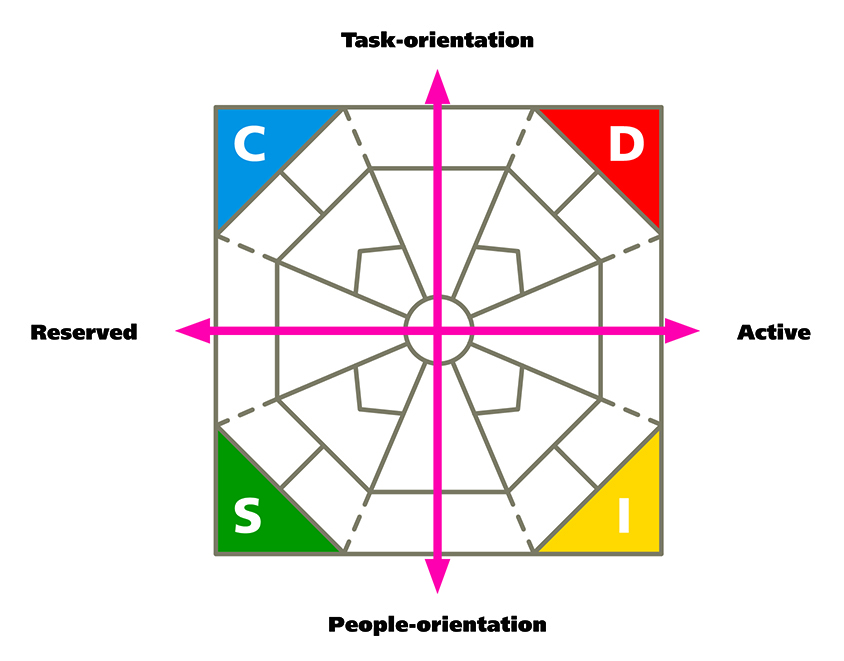
Many behavioral assessment tools are effective at Step 2; helping people in their self-discovery. However, that is usually not enough to achieve success. If the person is able to identify the DISC style in others using a simple observe, assess, and recognize approach, then they will have more information on how best to make behavioral modifications.
First, we observe a person’s pattern of behaviors in a non-judgmental way. Next, we use the DISC model to determine if the person is more task-oriented versus people-oriented, and more active versus reserved. Now we are able to identify their primary DISC style. The key to identifying styles of others is to practice and be mindful of ever interaction; whether it is in person, on the phone, in emails, etc.
Step 4: Modify your behavior
The most important step is to modify behavior. People need to understand that DISC is not about changing who they are. In the DISC Model there is no better or worse; only similarities and differences. Often, these temporary adjustments we make are very brief. If we practice and are mindful of when we modify our behavior then it will become second nature and we will quickly see positive results in our work and daily lives.
Goal of the 4 Step Process
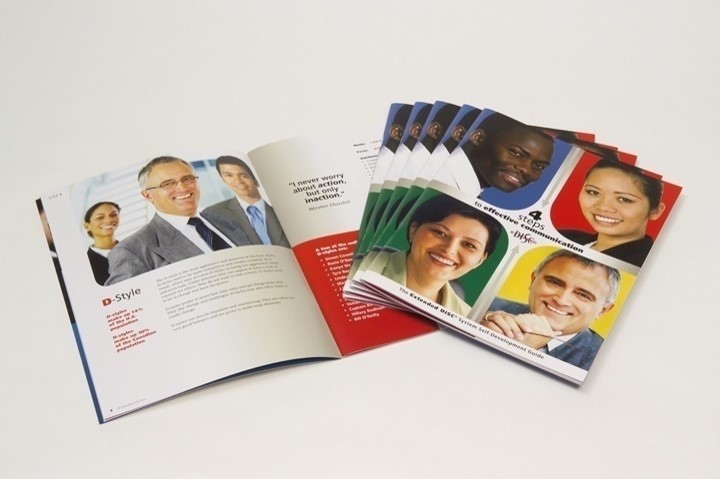
The goal of the 4 Step Process is to understand our preferred behaviors, and applying them effectively. In addition we need to be able to modify them to different situations. Ultimately, the goal is to increase our situational self-awareness and to develop a strategic behavioral response.
To learn more about the 4 Step Process and resources visit our website or contact us directly at +1.281.298.6073
“Insanity: doing the same thing over and over again and expecting different results.”
Albert Einstein
Successful Onboarding Using Extended DISC
The onboarding process is often a missed opportunity for helping new hires succeed within organizations
Getting new employees off to a great start is critical to their long-term success. However, each employee is unique with their different preferences. Onboarding can be challenging for many managers. Managers tend to focus more on recruiting and hiring the right people and overlook the power of the onboarding process. I’m not referring to a few days of new employee orientation. Instead, I’m focusing on those first few months on the job. Studies have shown that a strong start increases the ability to retain employees.
Continue reading “Successful Onboarding Using Extended DISC”
How to Promote and Sell Extended DISC®
Learn ways to promote and sell Extended DISC® assessments to your clients and organization.
 You know the strength of DISC in improving communication. You may also know how to deliver DISC, but how do you promote and sell Extended DISC® tools? Are you working for a training company or are you an independent consultant looking to enhance your business? Perhaps you’re an internal trainer looking to use the DISC tool to help your employees succeed. Whatever the reason, we can all use tips on how to effectively promote and sell Extended DISC®.
You know the strength of DISC in improving communication. You may also know how to deliver DISC, but how do you promote and sell Extended DISC® tools? Are you working for a training company or are you an independent consultant looking to enhance your business? Perhaps you’re an internal trainer looking to use the DISC tool to help your employees succeed. Whatever the reason, we can all use tips on how to effectively promote and sell Extended DISC®.
How DISC Helps Your Goal Setting Success
The beginning of the new year motivates us to set new goals and it may also help us feel better about shortcomings of the previous year. So how can DISC help in goal setting?
DISC impacts everything we do; how we react to pressure, how we socialize, how we react when the fire alarm goes off, etc. We cannot escape our DISC style. When you see successful people, regardless of their industry, they are always confidently self-aware.
Continue reading “How DISC Helps Your Goal Setting Success”What Makes Extended DISC Different from DISC?
Chances are you’ve been asked, “What makes Extended DISC different from other DISC tools?” They are not all the same. The distinction between the assessments is critical to getting the right information to actually improve communication skills.
Continue reading “What Makes Extended DISC Different from DISC?”
New Sales Assessments: Road Map to Success
We are introducing two new sales assessments. Don’t wait! Be among the first to preview our Sales Competence Assessment and our FinxS® Sales 18 Assessment.
Most sales managers are unhappy with the performance of their sales team. Many sales professionals are frustrated because they’re unclear about how to become more successful. What if you could identify the DNA of exceptional sales performance using our brand new sales assessments?
What Makes These Sales Assessments Different?
We currently offer several sales assessments based on DISC, which are among our most widely used DISC tools. They include the Sales Professional Assessment, which focuses on the development of the salesperson based on their DISC style. Salespeople can learn to adjust their DISC styles and use their strengths to sell better. We also offer the Sales Assessment for the Manager so managers can learn how to better lead, motivate and communicate with their individual salespeople. In addition, we have the Sales Team Assessment, also known as the Manager’s Playbook. Managers can better understand how to be an effective leader of their sales teams.
The salesperson simply takes the online DISC assessment one time, also known as a DISC test, to generate any DISC sales report. This highly validated DISC tool has been around for decades and continues to be a valuable communication and sales development tool. Now we have the new Sales Competence Assessment, which focuses on improving a person’s sales skills. The new competence report can be used by itself or with the FinxS® Sales 18 report, also based on DISC.
New Sales Assessments Focus on Sales Skills Development

Our new sales assessments focus on a person’s sales skills rather than on their DISC profile. The Sales Competence Assessment provides clear and intuitive results to create a road map to sales success. Salespeople can identify their strengths and weaknesses in 18 key sales competences. This assessment focuses on a salesperson’s development, in order to improve and sharpen their sales skills. The assessment is designed for people who already have at least some sales experience. It reflects their current level of competence, which means they can develop skills in any or all of the 18 sales competences with training and coaching.
The main purpose of the Sales Competence Assessment is to help clients to increase sales. Coaches and managers find it intuitive and easy to use. This new report requires less training to master than DISC reports, but also builds in the need to have coaching to progress forward. The role of the sales coach or manager is important.
Coaches and managers can also use the report to measure progress since the results reflect the salesperson’s current sales skills. As they develop, the results will vary, so progress can be measured. The tool also predicts the salesperson’s success.
The Sales Competence Questionnaire
The Sales Competence questionnaire has 99 questions and is different from the DISC questionnaire. However, the process for completing the two assessments is the same. Both are done online on the same online platform but both require a unique access code. The Sales Competence questionnaire takes 20-30 minutes to complete. The results are generated immediately.
What are the 18 Sales Competences?
The 18 sales competences measured are critical sales skills for selling success. Each of the 18 skills are clearly defined in the report. They are all vital to successful selling, but depending on the sales role, some may have more importance than others. For example, prospecting may be more vital to an outside sales role versus an inside sales role. The inside salesperson may not need to prospect as much because they are provided with leads. Here are the 18 sales competences:

18 Sales Competences Highlights in the Report
The Executive Summary page highlights a salesperson’s overall scores for the 18 sales competences. They are based on the responses to the Sales Competence Questionnaire. Coaches and managers can get a quick and concise picture of a salesperson’s overall skill levels. The lower the score, the lower the competence level. The higher the score, the higher the competence level. It is easy to interpret and provides the big picture. The 18 skills only reflect a person’s current skill level. Remember, these skills can be developed.
The Individual Scores section is a further break down of the 18 competences. You are able to see the detailed score for each skill. For example, if a salesperson’s Prospecting score is 10%, then he is someone who is less likely to call on prospects. He prefers to wait for prospects to show up and will focus more on current clients to generate business. If a salesperson scores high on the skill, then she is on the other end of the scale for Prospecting. She is a “hunter”; someone who pursues prospects and takes charge of finding and creating sales opportunities.
Development Plan Highlights in the Report
Now that the salesperson knows the levels of their sales competences, they can begin to develop an action plan. They can use the information provided in the Development Plan section to create a road map to building and honing their sales skills. The Development Plan section takes the 18 Competences, defines each, and describes how the salesperson currently tends to perform each of the 18 sales skills. Next, there are specific steps for improving each skill.
There is one page per competence, and hence, there are 18 Development Plans. The sales manager or sales coach can easily use these concrete steps to help the person improve each skill.
In addition, there are specific questions for the salesperson. The questions can be used for self-reflection or by the sales coach or manager to help in the development. They are based on the respondent’s unique scores for the 18 skills.
What Are Mindsets?
Mindsets are building blocks of the 18 sales competences for selling success. There are 12 different Mindsets. They are like basic instincts or survival mechanism. They are the way a person approaches problem solving and overcoming challenges.
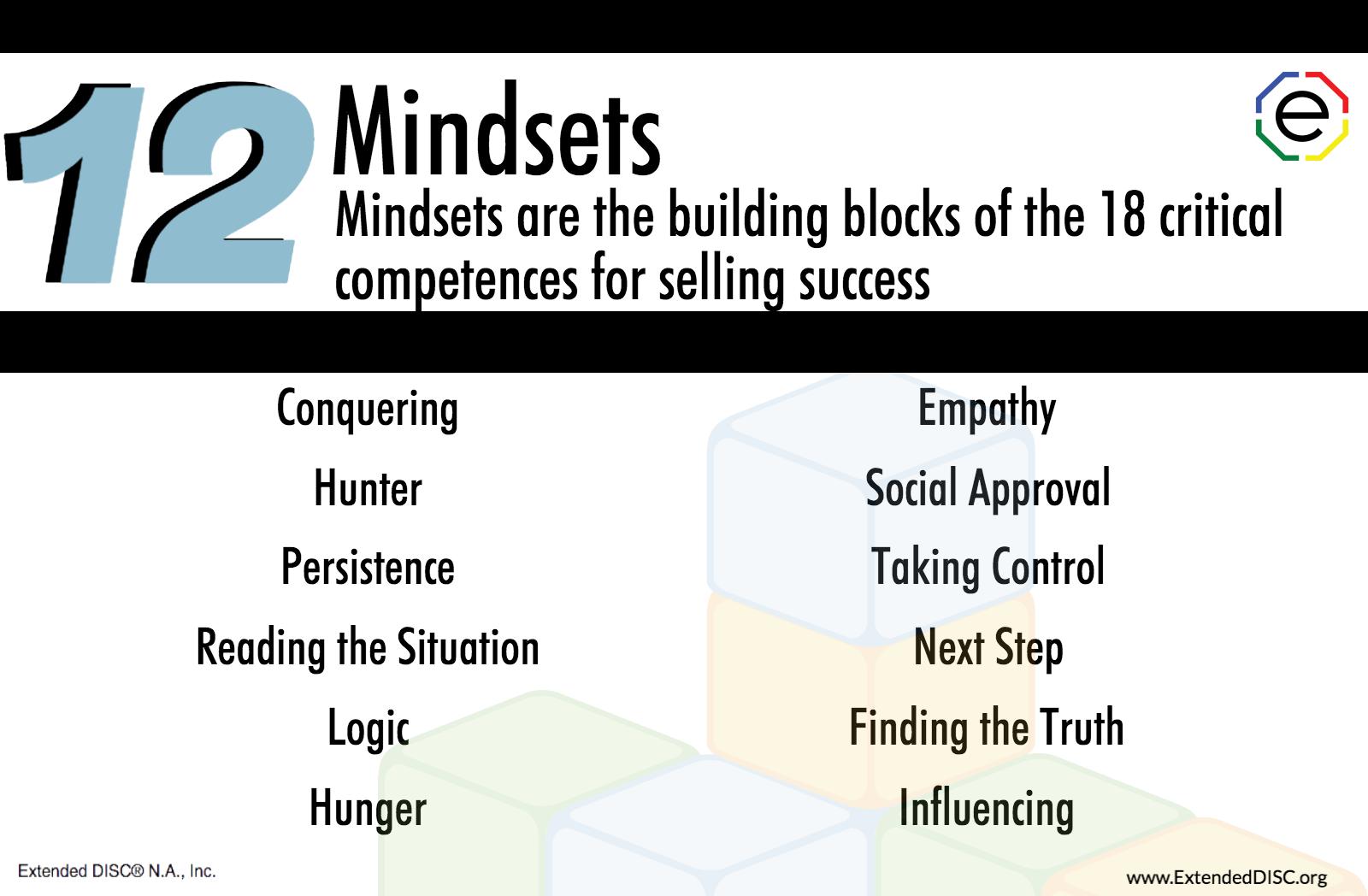
Each sales competence is made up of 1-3 Mindsets. The Mindsets for each of the 18 competences are used to clearly identify specific roadblocks to success in sales. They provide a clearer picture of what the person’s challenges are for each sales skill. They also help to develop a clear action plan to improve the sales skill by pinpointing self-defeating beliefs.
When competence and mindset scores are evaluated together, clear action steps can be developed. You can identify what sales competences are easier to develop and which ones may present greater challenges. We recommend a consult with a trained sales coach to interpret mindsets and their effects.
FinxS® Sales 18 Helps Identify the DNA of Sales Excellence

FinxS® Sales 18 is designed to clearly connect to the FinxS® Sales Competence Assessment. The report is a DISC based tool. The report is created when the person completes, or has completed, our DISC survey. The FinxS® Sales 18 report matches a person’s DISC profile, natural behavioral style, to their current skill level for each of the 18 sales competences measured by the FinxS® Sales Competence Assessment.
The 18 sales skills are broken down into groups of related behaviors. There are 18 distinct pages; each sales skill has a group of specific behaviors. This allows users to clearly see a person’s unique sales strengths and development areas.
Using the Sales 18 Results with the Sales Competence Results
In addition, the FinxS® Sales 18 report can identify if a person is performing better than their natural style predicts or if they are not using their full potential. For example, if the person has low Prospecting scores in skills and in the DISC style, then you can predict a lot of energy and work ahead to develop the person’s Prospecting skills. In addition, the Mindsets can predict if the person’s belief system is creating roadblocks and holding them back.
Alternatively, a person’s prospecting skills score (Sales Competence Report) could be low, but they have a natural behavioral strength when it comes to prospecting (Sales 18 Report). The low score for the current skill level and the high score for DISC style tell us they should do well with prospecting. However, something in their belief system, or simply lack of skills, is holding them back.
You can create a concise action plan and predict sales success. You know what to focus energy and time on to truly develop a sales skill.
How Do You Get Started?
To learn how to help your clients or your sales team members become better at selling, or to view samples of our latest Sales Assessments, click on contact us or give us a call 1.281.298.6073. Don’t wait!
Using DISC Profiles at the Organizational Level
How can CEOs and leadership use the DISC assessment tool to better manage their employees? ‘Using DISC profiles at the Organizational Level’ webinar is part 3 of our Using Team DISC Assessments series.
In part one of the series, we discussed how Team DISC Assessments can provide supportive information for teams to achieve success. The idea is to help people become more effective team members and develop a successful team. In part two, Manager’s Playbook, we focused on how managers could use team DISC assessments to better lead and develop their teams. Now we focus on how we manage and use DISC Profiles at the organizational level.
The Progression to DISC Profiles at the Organizational Level
One of the best qualities of the DISC tool is the ability to access a large variety of data using one common framework. First, your employees complete the DISC assessment. Once their DISC profile is generated, you then have access to a variety of DISC reports including leadership, sales, etc. DISC assessments help employees learn more about their DISC style. Once they know their DISC style, they also learn how to make appropriate adjustments in their behavior in order to be successful. In addition to the individual reports for your employees, managers can receive tailored reports on how to better manage and coach their team.
Now we can move on to team applications. Team DISC assessments are easy to create and easy to use. Teams use them to learn more about themselves. Groups can discuss team dynamics in a safe setting; DISC doesn’t make value judgments. DISC reports provide data that can be commonly shared and understood to help teams find their ‘aha’ moments. On the next level, managers can use the Manager’s Playbook, a team DISC assessment designed for the team leader. The Manager’s Playbook helps the team leader to motivate, communicate, and develop their teams.
Finally, we have progressed from individual DISC reports to team DISC reports. Next, we want to take a step back and look at the bigger picture issues. We can start by understanding why we need to use DISC as a strategic tool for executives to look at teams, departments, regions, and the whole organization.
Why Do We Need DISC Profiles at the Organizational Level?
Bank lenders are expected, and even required to make loan decisions based on sound data and metrics. Lending institutions require thorough financial details of a potential client before they will provide a loan. However, leaders may be forced to make decisions about their employees in a vacuum; without that critical piece of solid data. Leaders may feel they need to make decisions based on gut feelings or simply hoping it’s the correct one. DISC provides leaders with solid objective data to make better decisions.
Leaders often cite employees as their company’s most valuable resource. DISC allows leaders to have access to sound metrics to strengthen and elevate their company’s performance. They need to understand how their employees communicate and what motivates them. DISC can be an analytical organizational development tool for leaders to understand complex issues more clearly. DISC data may not have all the answers, but it can help leaders know what questions to ask.
Using DISC to Look at Sales Employees
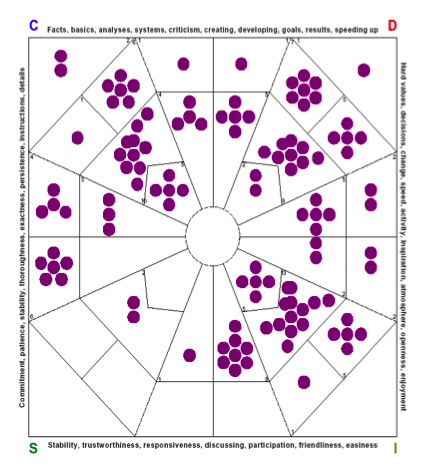
Here’s an example of how leaders can use DISC profiles at an organizational level. The Shotgun Map represents a real company in the pharmaceutical industry. We are looking at their entire sales force of 118 employees. The most obvious observation is seeing less S-style employees than any of the other DISC styles, but it really doesn’t tell us more than that. Leaders may too quickly assume that S-styles are not suited for the company. However, we can’t make clear, informed decisions solely based on the Shotgun Map data. We need to put the data into context. One way to do that is to slice the data.
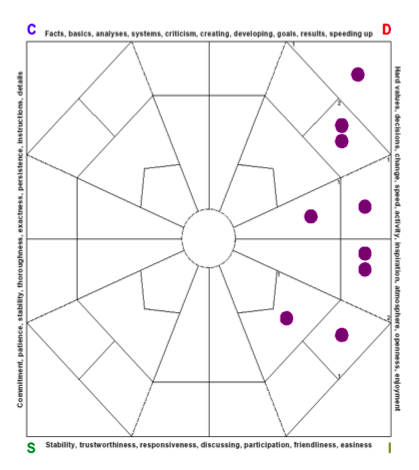
We have taken the 118 sales people from previous DISC map and zeroed in on the top 9 sales performers. The story starts to emerge, but it may still not be the entire story. Again, sales managers may see the results and assume they should hire more D-styles and I-styles. Managers must avoid jumping to conclusions when the story is not complete. In context, the data only showed top performers during a one month sales period. The story changed. S-style and I-style employees were actually the top sales performers when the data reflected sales revenue over longer periods of time. D-style and I-style employees also had much higher turnover at this company, while S-styles and C-styles tended to stay loyal. The information helps leaders know what questions to ask. For example, “how much is he/she willing to invest time and money into training?”
Using DISC Profiles Beyond the DISC Reports
Leaders can look at the DISC data in many different ways. In addition to extracting top sales performers by DISC styles, they can look at their employees by age groups. How do Millennials versus Baby Boomers perform in certain roles? They can slice the data to look at regions, departments, etc. Leaders can use the DISC tool to ask the right questions and to make more sound decisions. Each company has it’s own unique situations and challenges and the above company is just one example.
Additionally, leaders can use DISC profiles at the organizational level to look at trends. Are there certain DISC styles of employees that tend to leave the organization more than others? Are certain managers losing productive employees more than others? What is the DISC style of the managers compared to the DISC styles of the employees? Is there any relationship between the DISC styles? The Extended DISC executive dashboard can help leaders quickly identify these trends. Leaders don’t need to adhere to one standard team DISC report. Leaders can run specific and customized DISC data for their teams.
Using DISC profiles to Identify and Manage Conflict Between Teams

Sales and production teams are a classic example of conflict between two different groups. One group, with more C-styles and D-styles, is clearly more task focused while the other, with I-styles and S-styles, tends to be more people focused. The two groups interact often. We would be able to understand more if we identified key players and team leaders. The teams also need to understand how similar DISC styles can amplify the strength and areas of development behaviors. Again, leaders with this information can ask more effective questions and identify areas to improve. The employees may be more receptive because the information is based on their own DISC profiles and not the sole opinion of the managers.
DISC Profiles at the Organizational Level
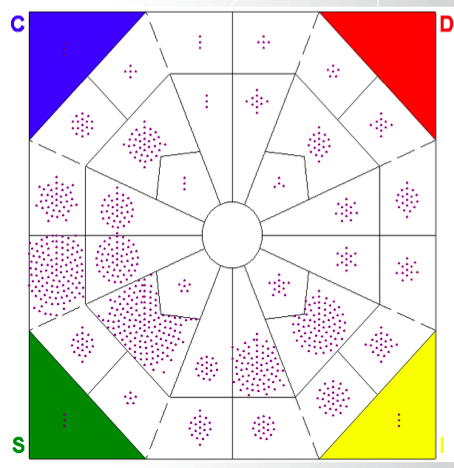
We’ve looked at using DISC at department and team levels, but how do we apply it at the broader organizational level? You can look at the entire organization using our DISC tool. Leaders can see their organization at a broader macro level. Leaders can better plan, anticipate problems, and prepare for challenges.
Looking at the example, there appears to be a higher concentration of S-style employees. For the D-style CEO, he/she may become more aware of the S-style employees. The D-style CEO may feel comfortable with the company’s constant change, but the S-style employees may not. He/she can better identify adjustments he/she needs to make in order implement company change effectively.
The DISC team map also shows a higher concentration of I-styles and S-styles which are the people-oriented styles. Companies tend to have concentrations of styles. Companies rarely, if ever, have evenly distributed DISC styles amongst employees. The CEO can use this information to make decisions that affect his/her employees.
Your DISC Data is limitless in potential applications.
Our clients have found many uses for DISC data in organizational development. CEOs use it to better understand their employees which helps them know how to motivate and communicate with them. In addition, leaders can determine how much direction or independence employees may need. What is the best way to facilitate change? People keep saying the speed of change appears to be faster and faster. How do I, as a leader, manage constant change? Our clients have found limitless ways of using the DISC data.
Looking at DISC profiles at the organizational level is critical, but we always need a place to start. First, leaders must look at themselves. Leaders, just like anyone else, can only control and modify their own behaviors. We can’t force others to modify their behaviors. Therefore, the leaders who gives more value to DISC and practices DISC regularly, will find improved communication within his/her company. The use of DISC filters down from the CEO to the C-level team, then to the managers, and ultimately to the entire organization.
Manager’s Playbook: Using DISC Assessments
Every coach of a sports team has a playbook designed to guide his/her players to success. Wouldn’t it be great if you had a Manager’s Playbook for leading your team?
The team DISC Assessment is a widely used DISC tool. As the name implies, we often use it for working with teams. However, we are seeing more and more how managers can use team assessments to manage and develop their teams. We are looking at similar information, but from a different viewpoint using the Manager’s Playbook.
Starting with the Individual DISC Report
The first step is to start at the individual level by having each team member complete the DISC Assessment. From that, you can print many kinds of DISC reports including Sales, Standard, Leaders, etc. Your team member receives a tailored DISC report in order to develop better awareness of self. What are our own preferred ways of doing things?
Coaches and managers can help the person understand his/her DISC profile type and how they can improve their daily interactions. The DISC report provides a lot of actionable information which can be more useful in effective change.
Progressing to the Manager’s Report
A possible next step still focuses on the individual, but from the manager’s viewpoint. For example, you could print the Sales Assessment for the Manager. Managers and coaches can use the report to help support the person become more effective in their interactions. You can identify and help your employee better understand his/her strengths, motivators, communication style, etc.
Your employee takes one, and only one, DISC test and from that you can generate as many different reports as you need. That’s the best part of our DISC tool.
What is the Manager’s Playbook?
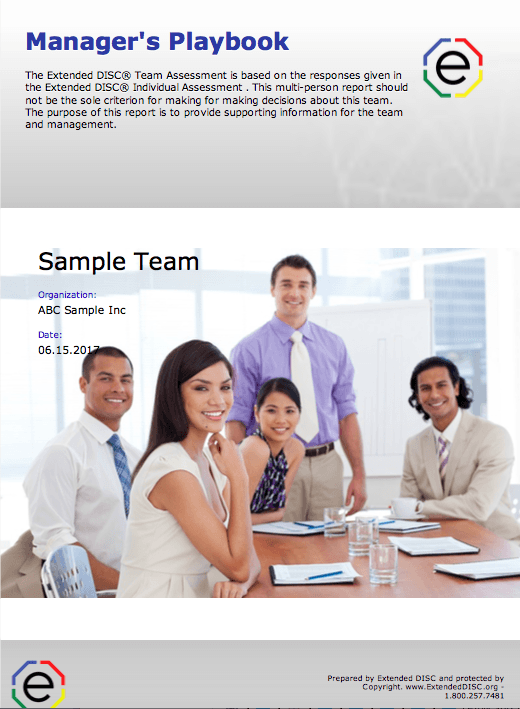 We take all the team members’ individual results and create the team report. This Team DISC Assessment is not designed for the team, but for the manager. However, there are similar sections and graphs to the standard team report.
We take all the team members’ individual results and create the team report. This Team DISC Assessment is not designed for the team, but for the manager. However, there are similar sections and graphs to the standard team report.
We call this the Manager’s Playbook because we find that many managers keep it close at hand and refer back to it often. The idea is that you have accessible and quick information to refer to when meeting one-on-one and in team meetings.
It’s a constant reminder to modify your leadership behaviors as much as you can. Sections of the report include how to better communicate with your team and how to motivate your team. In addition, the report highlights what type of management style would best match each employee.
Our Pressures as a Manager
Managers tend to become focused on daily routines and become very task-oriented. We may start the day with a clear agenda and the energy to accomplish our goal, but then things happen. We find that our clear agenda gets pushed aside with problems that pop up or opportunities that we didn’t anticipate. How can we let great chances slip right by? We can’t.
So at the end of the day, we end up entangled between these diversions and we lose sight of what we need to do to be more effective as leaders. Our success is not measured by how we contribute as an individual, but it’s how well my team and department performs. It is up to us, as managers, to develop our employees to be able to succeed and achieve goals and generate results. The Manager’s Playbook helps us stay focused on the big picture and overall plan.
Where to Start with the Manager’s Playbook?
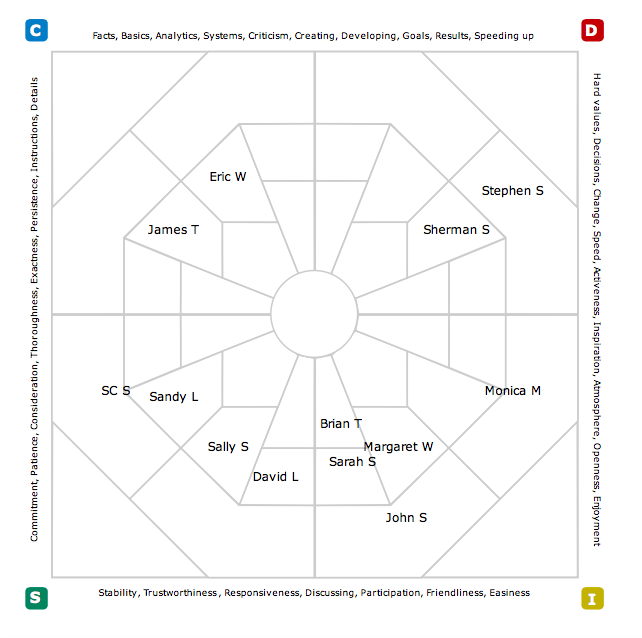 The Name Map is a great place to start to elevate the performance of the team. Managers will view the Manager’s Report differently from the team members. Team members and managers have different motivators and viewpoints. Hence, the meaning of the data will be different as well. Managers may not find the Shotgun Map as helpful since they already know where their employees’ natural DISC styles are. As a manager or coach, you want to know what kinds of styles you have on your team.
The Name Map is a great place to start to elevate the performance of the team. Managers will view the Manager’s Report differently from the team members. Team members and managers have different motivators and viewpoints. Hence, the meaning of the data will be different as well. Managers may not find the Shotgun Map as helpful since they already know where their employees’ natural DISC styles are. As a manager or coach, you want to know what kinds of styles you have on your team.
Do you have groupings of DISC styles within your team? Are there areas on the Name Map that do not have team members? It’s all about the context. Lack of team members in a DISC quadrant is only a weakness if those DISC behaviors are required for the team to succeed.
Using Other Sections of the Manager’s Playbook
Your Team at a Glance section quickly reminds you each of the attributes of your team members. It can remind you that each team member requires an adjustment of your leadership style and also reminds you to avoid treating everyone the same way. Attributes are a way to visualize the DISC style of a person. Use this section as a quick reference guide to remind yourself of your team members’ DISC styles.
Managers can use the How to Manage Your Team section to manage expectations of what your team members need from you as a manager. What is my ideal leadership style with each of my employees? This is a good reminder of ways to adjust my leadership style to best manage each of my employees. Managers who are fluent in the language of DISC still need specific tips on how to adjust their behaviors with each employee. It’s much faster to refer to this section than going back and reading a full DISC report.
Once managers know how they can better manage different employees, then they can move on. Managers can use the How to Motivate Your Team section to identify what motivates each of their employees. Again, it’s a quick reference card for your team.
Manager’s Playbook Behavioral Dimensions
There are over 2000 behavioral dimensions that are available in the Manager’s Playbook. Managers can visually see and compare how comfortable or not comfortable employees are with certain behaviors. Remember the DISC report including these behaviors are not about one’s ability, but energy level. If certain behaviors are more natural for an employee it doesn’t mean that it’s a good thing. It could even be a liability if it’s overused or not appropriate for the role.
These graphs lay out how the entire team shows up on behaviors that are important to the team’s success. It’s quick, easily accessible, and highly usable. We find that if we overload managers with information then there’s a good chance they won’t use it.
Visualizing Team Pressures in the Manager’s Playbook
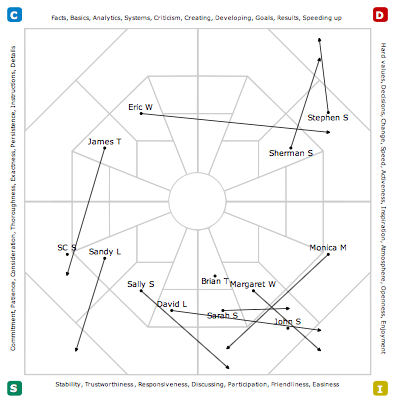 Look at the Arrow Map from the viewpoint of the manager because the interpretation will be different. The arrows for team member reflects how they feel they would need to adjust their natural DISC style to succeed in their present environment.
Look at the Arrow Map from the viewpoint of the manager because the interpretation will be different. The arrows for team member reflects how they feel they would need to adjust their natural DISC style to succeed in their present environment.
The are different pressures that will influence the direction of the arrows, but the number one pressure is most likely the manager. The manager is the one who evaluates and sets the expectations and goals. Employees feel driven to be successful in the eyes of their managers.
So managers need to look at these adjustments carefully. Are the directions of the arrows what they expected and wanted them to be? Why do my employees feel these adjustments create success?
Therefore, managers first need to have a clear vision of what they want to achieve. If managers don’t have that clear vision then it may be reflected in the arrows. The arrows may go every which way.
Am I the Problem and How Can I Change That?
Managers may bring in trainers or consultants to help address team issues. They may automatically assume the problem is with the team. Team members need help with something they are doing wrong. Managers may be the problem if they are not providing clear goals and expectations.
The Manager’s Playbook provides clear data and helps managers manage the team as a whole. If managers have this information they can better understand their team and give better big picture guidance. Managers can use the Manager’s Playbook to better support and develop each team member. In addition, they can use it to support and develop the team as a whole.
Reinforcing Success Using DISC
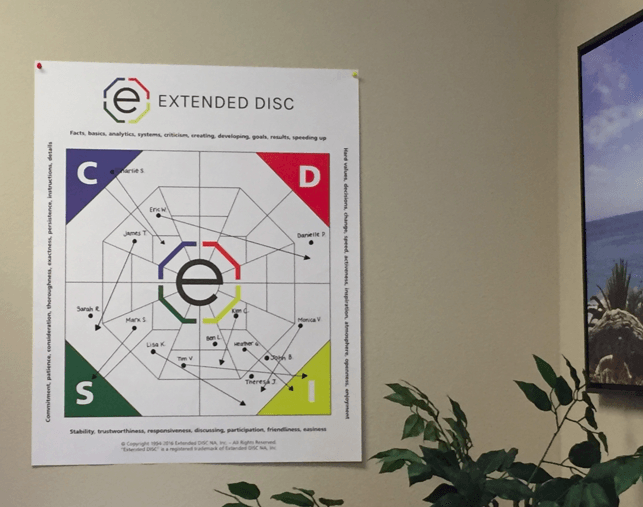
A great way to reinforce DISC for managers is to display their team’s DISC Diamond Map in their offices. It’s a quick and constant reminder for managers to adjust their DISC styles for different employees.
DISC needs to become part of the organizational culture. When managers put this visual chart on their walls it shows the team that DISC is important. Employees who see the Arrows Map prominently displayed on their manager’s wall will realize that their boss values DISC and therefore, they need to as well. In addition, other managers will see the team map and also want to use it to gain the competitive edge. This is a simple and visual method to build DISC into the organizational culture.
There are many ways to become a more effective manager. The Manager’s Playbook is one great tool to do just that.